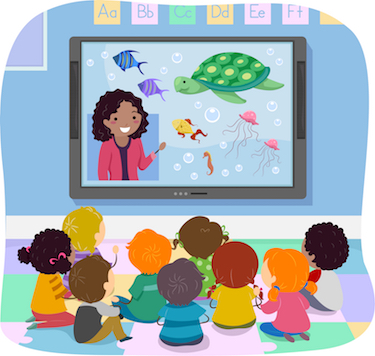Hello!
With school back in session, I thought it would be a good time to bring you another webinar review, this time about virtual school programming. Presented by the Ontario Museum Association, this webinar discusses the questions that small and rural museums need to consider when deciding whether and how to create virtual school programs.There are many benefits of virtual programming, especially for small and rural museums. They offer a great way to increase the accessibility of your museum, whether it be physical or financial. Virtual field trips have the ability to reach a wider and more diverse audience of students, including those outside of your local community. Online programs are often more financially-friendly options for both schools and museums. Students can save on travel costs and museums can save on supplies and staffing costs. Not only do virtual programs help save money, they also require less of a time commitment.
Despite all of the benefits, there are still many important points to consider when taking on the challenge of creating a virtual program for your museum. The webinar provides a helpful worksheet that museums can work through in the program development process to make sure they are thinking about all of the necessary points. If you are thinking about developing a new virtual school program for your museum or re-evaluating an existing program, you may find this worksheet useful. Here is a brief overview of these key areas of consideration:
Why?
Why do you want to do virtual school programming? Before creating a program, you should be thinking about what goals you are hoping to achieve by introducing new virtual options. Maybe you want to offer something new to local schools, engage with new schools outside of your community, or you are seeking a new stream of revenue generation. Ultimately, you will need to decide whether or not virtual school programming is the best way for your museum to reach its goals.
Who?
Who is your target audience? After deciding to move forward with the creation of a virtual program, you will need to decide what grade level, school district, and communities you are hoping to reach. You will also need to think about how you will promote your program to these target audiences, whether it be sharing it through professional organizations, traditional media, or by contacting educators directly.
What?
What is the topic of your program? Think about what your museum knows best and develop a program that fits into your specific area of expertise. Once you choose a topic, think about how it can be tailored to suit the intended audience of the program. As a school program, you will also need to create strong curriculum connections within your program. Educators will not book a program unless they can justify how it serves their curriculum needs, so do your research and make these connections clear.
How?
So now that you have decided what type of program you are going to develop and who its audience will be, you will need to turn your attention to the logistics of how it will operate. Will it be synchronous or asynchronous? What technical equipment will you need to run the program? What are the staffing requirements to build and deliver the program? How will you measure success?
No matter what type of virtual school program you decide to offer, one of the most important things to keep in mind is to start with something small and manageable and scale up from there. It is perfectly fine to get creative and test out different program ideas until landing on the one that works best for your museum. Happy programming!
- Madeline


No comments:
Post a Comment